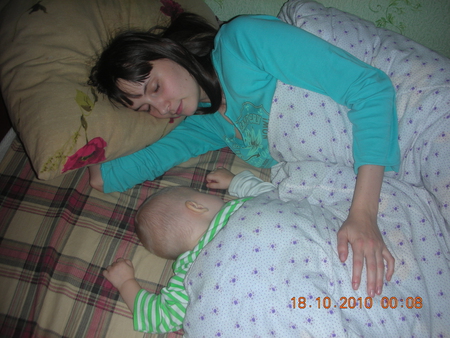http://www.ncbi.nlm.nih.gov/pubmed/21945361
Asynchrony of mother-infant hypothalamic-pituitary-adrenal axis activity following extinction of infant crying responses induced during the transition to sleep.
Abstract
This study examines change in the synchrony between mothers' and infants' physiology as 25 infants (11 males; 4 to 10 months of age) participate in a 5-day inpatient sleep training program in which they learn to self-settle through extinction of crying responses during the transition to sleep. The mothers' and infants' experience during the extinction protocol was "yoked" by the infants' behavioral signaling during the sleep transition period. Saliva was sampled for mothers and infants at initiation of infants' nighttime sleep and following infants' falling to sleep on two program days and later assayed for cortisol. As expected on the first day of the program, mothers' and infants' cortisol levels were positively associated at initiation of nighttime sleep following a day of shared activities. Also, when infants expressed distress in response to the sleep transition, mother and infant cortisol responses were again positively associated. On the third day of the program, however, results showed that infants' physiological and behavioral responses were dissociated. They no longer expressed behavioral distress during the sleep transition but their cortisol levels were elevated. Without the infants' distress cue, mothers' cortisol levels decreased. The dissociation between infants' behavioral and physiological responses resulted in asynchrony in mothers' and infants' cortisol levels. The findings are discussed in relation to understanding the determinants and implications of maternal-infant physiological synchrony in early childhood.
Copyright © 2011 Elsevier Ltd. All rights reserved.
Comment in
- PMID:
- 21945361
- [PubMed - indexed for MEDLINE]

 И вот недавно мне надоело слушать всех умных, кто знает как "лучше" для моего ребенка и я стала делать то, что я хочу и подсказывает мне моё сердце...
И вот недавно мне надоело слушать всех умных, кто знает как "лучше" для моего ребенка и я стала делать то, что я хочу и подсказывает мне моё сердце...





 И - да, для любви тоже есть время и место ...и помимо супружеской кровати.
И - да, для любви тоже есть время и место ...и помимо супружеской кровати.
